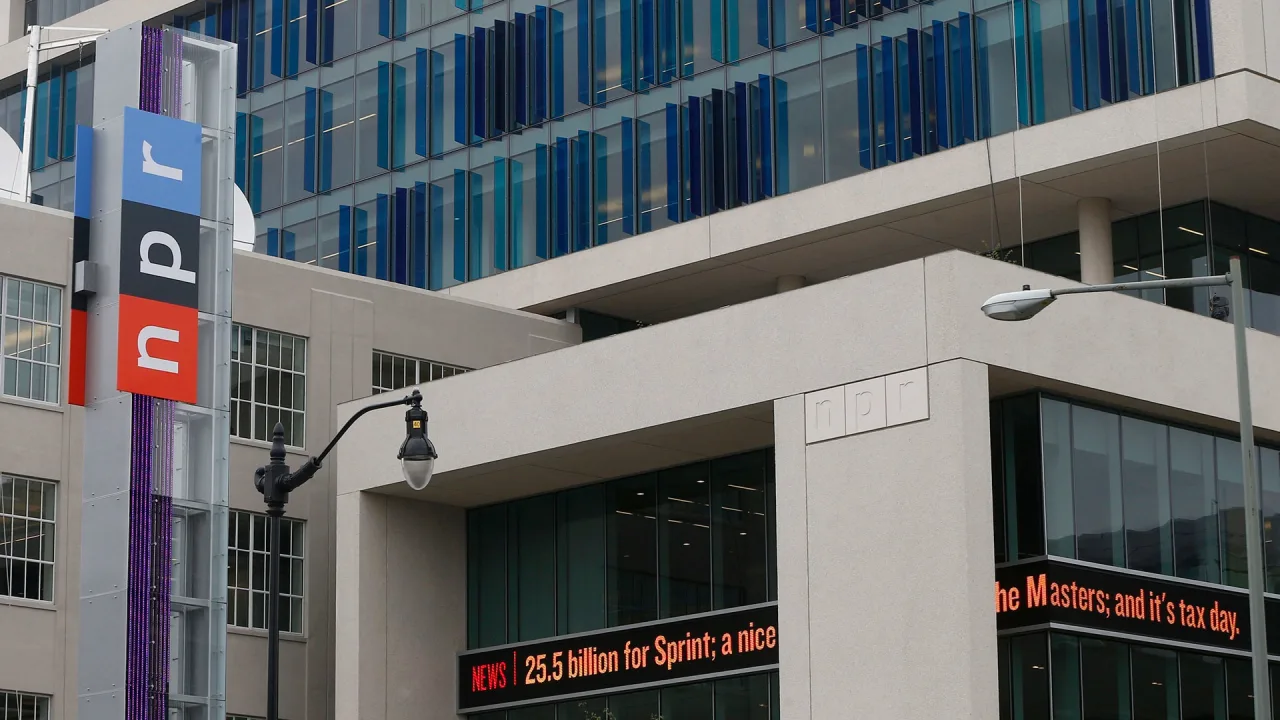Boost Fintech Marketing Results with Effective Push Ad Campaigns
The financial services landscape has evolved dramatically over the last decade, spurred by growing consumer comfort with digital channels and the proliferation of smartphones.
Fintech push ads have rapidly become a cornerstone of modern Financial Services Marketing strategies, offering an unobtrusive yet highly effective way to engage prospective customers. As competition intensifies in sectors ranging from digital banking to insurance display ads, mastering the art of push notifications can be the difference between a lukewarm campaign and one that drives substantial ROI. This article delves into the nuances of crafting and deploying fintech push ads that not only capture attention but also guide users seamlessly toward conversion events.

The Rise of Fintech Push Ads in Digital Marketing
The financial services landscape has evolved dramatically over the last decade, spurred by growing consumer comfort with digital channels and the proliferation of smartphones. Push notifications—short, timely messages sent directly to a user’s device—have emerged as a powerful vehicle for Financial Services Marketing. Unlike email, which can be overlooked or relegated to spam folders, push ads appear on the user’s lock screen or notification center, ensuring near-immediate visibility. This heightened prominence makes them ideal for sharing time-sensitive offers such as promotional rates on personal loans or alerts about trending Forex pairs to increase forex website traffic.
Integrating Push Ads into a Holistic Marketing Mix
While push ads can drive impressive engagement in isolation, their true potential is unlocked when they are part of a broader, multi-channel campaign. A well-integrated tactic might begin with a targeted social media campaign to raise awareness of a new lending product, followed by email nurture sequences that supply in-depth content, and culminate in push notifications that deliver personalized calls to action. Leveraging customer data from CRM systems allows marketers to tailor fintech push ads to life events—such as a new job or approaching wedding—that often trigger financial service needs. In this way, Financial Services Marketing becomes a cohesive journey rather than a series of disjointed touchpoints.
Crafting Fintech Push Ads that Resonate
Creating push notifications that convert requires attention to both message content and timing. A push ad’s concise format demands clarity, relevance, and a compelling incentive. The following considerations are essential when designing fintech push ads:
Precision Targeting through Segmentation
Effective segmentation ensures that each user receives push ads most relevant to their interests and behaviors. For instance, users who have recently downloaded a budgeting app may be prime candidates for a home loan advertisement, while seasoned traders could respond more favorably to alerts about strategies to increase forex website traffic. By analyzing in-app behavior, transaction histories, and demographic data, marketers can cluster users into finely tuned cohorts. Push ads sent to these cohorts can mention specific features—such as low introductory rates on personal loans or streamlined application processes—that directly address the recipient’s needs.
Dynamic Content for Personalization
Incorporating dynamic content fields—like the user’s first name, recent balance thresholds, or targeted offer expiry dates—adds a layer of personalization that significantly boosts engagement rates. Instead of generic headlines, a push ad might read: “James, unlock 1.9% APR on your next home loan”—a nuance that feels tailored rather than templated. This approach aligns with best practices in insurance display ads, where contextual relevance is known to drive click-throughs and completed applications. Dynamic personalization is equally potent for fintech push ads, reinforcing the sense of a one-to-one conversation between brand and consumer.
>>>Maximize Your ROI—Get Your Campaign Started!<<<
Optimal Timing and Frequency for Push Notifications
Timing is everything when it comes to push ads. Sending a notification at the precise moment of user receptiveness can make the difference between interaction and dismissal.
Understanding User Activity Patterns
Analyzing peak usage windows for your app is the first step toward optimizing push schedules. Financial apps often see higher engagement during weekday mornings and early evening hours, when users check balances or manage budgets. Conversely, forex trading platforms may observe spikes during market-open times or around major economic announcements. By syncing push delivery with these high-activity intervals, marketers can increase the likelihood of users acting on a fintech push ad. Tools like in-app analytics and A/B testing can pinpoint the golden hours for maximum impact.
Balancing Engagement and Avoiding Fatigue
While frequent notifications can keep users informed, overdoing push ads risks desensitizing the audience, leading to opt-outs. The key lies in balancing urgency with value. For example, pushing a reminder about an expiring introductory rate on a lending product every few hours may feel spammy, whereas once-daily reminders timed near the offer expiry can be seen as helpful. Likewise, cross-promoting related products—such as pairing a home loan advertisement with complementary insurance display ads—can add value rather than redundancy, bolstering overall Financial Services Marketing objectives.
Designing Push Ad Creative that Drives Action
The visual and textual elements of fintech push ads must coalesce seamlessly to prompt user engagement. The limited character count and small delivery format demand a focus on clarity and brevity.
Crafting Attention-Grabbing Headlines
A headline must immediately convey the core benefit or incentive. In the world of fintech push ads, this often means highlighting a rate advantage, cashback offer, or personalized recommendation. Phrases like “Exclusive Rate Inside” or “Your Forex Edge Awaits” can pique curiosity. It’s crucial to avoid jargon and ensure the copy reads naturally on a lock screen. After the headline hooks attention, a concise description can elaborate just enough to entice the user to tap through for full details.
Incorporating Strong Calls to Action
A clear call to action (CTA) tells the user exactly what to do next. CTAs such as “Explore Today,” “Apply Now,” or “See Rates” succinctly guide behavior. Embedding action-oriented verbs encourages immediate response, a tactic well-established in insurance display ads and increasingly adopted in fintech push ads. Pairing the CTA with a sense of urgency—through limited-time language or countdown timers—can further accelerate user clicks and conversions.
Measuring and Optimizing Push Ad Performance
Successful use of fintech push ads demands continuous measurement and iteration. Marketers should establish clear KPIs—such as click-through rate, application completion rate, and lifetime value of users acquired via push campaigns—to gauge success.
Leveraging Analytics for Continuous Improvement
By tracking funnel metrics from push delivery to final conversion, teams can identify drop-off points and refine messaging. For example, if click-through rates on a home loan advertisement are high but form completions lag, simplifying the application process or adjusting the landing page could yield better results. Similarly, if an alert to increase forex website traffic generates strong interest among a certain demographic, expanding that segment can amplify returns.
A/B Testing to Refine Creative and Timing
A/B tests allow marketers to experiment with variants of headlines, descriptions, CTAs, and send times. Continuous testing helps uncover best practices specific to each audience segment. Over time, these incremental gains compound, transforming fintech push ads into a finely tuned machine for customer acquisition and retention.
Ensuring Compliance and Building Trust
Financial services marketing is subject to stringent regulations around disclosure and privacy. Incorporating transparent language and honoring user consent are non-negotiable.

Crafting Compliant Disclosures
Push ads promoting lending or investment products must include essential disclosures, often within the linked landing page. Short-form disclosures can also appear in the notification itself—phrases like “Learn about terms” or “Rates subject to approval” signal transparency and protect against regulatory scrutiny.
Respecting User Privacy and Preferences
Obtaining explicit opt-in for push notifications is not only best practice but also often a legal requirement. Providing easy settings for users to modify topics or frequency enhances trust. Brands that honor these preferences maintain higher engagement rates and foster long-term loyalty.
Future Trends in Fintech Push Advertising
As technology and consumer expectations evolve, so too will the strategies behind fintech push ads. Early adoption of emerging channels—such as in-browser push for desktop users or integration with wearable devices—can offer new frontiers for engagement. Advances in AI-driven personalization will further sharpen the relevance of each notification, ensuring users receive the right message at the right time.
Expanding into Cross-Channel Orchestration
Push notifications will increasingly act in concert with chatbots, SMS, email, and in-app messaging to create a seamless dialogue across channels. This cross-channel orchestration can guide users through complex journeys, from initial awareness of a home loan advertisement to final acceptance and onboarding, all while capturing opportunities to upsell insurance display ads or new forex trading tools.
In an ever-competitive landscape, mastering fintech push ads represents a vital skill for marketers seeking to maximize conversions. By combining precise targeting, dynamic personalization, judicious timing, compelling creative, rigorous measurement, and unwavering compliance, brands can create push campaigns that not only deliver results but also enhance the overall customer experience. As fintech continues to mature, those who leverage push notifications effectively will stand out in the crowded marketplace and foster lasting relationships with their audience.
Conclusion
Fintech push ads offer a powerful, direct, and personalized way to engage your target audience and drive meaningful conversions. By leveraging real-time notifications, segmenting users effectively, and crafting compelling messages tailored to user behavior, fintech marketers can significantly boost campaign performance. Integrating push ads into a broader financial services marketing strategy ensures consistent user engagement across multiple touchpoints—from mobile apps to web platforms.
Frequently Asked Questions (FAQs)
What metrics should I track to measure the success of fintech push ads?
Ans. Key metrics include delivery rate, open rate (click-through rate), conversion rate (e.g., completed applications), cost per acquisition, and the lifetime value of users acquired through push campaigns. Monitoring these indicators helps pinpoint strengths and areas for improvement.
How can I avoid overwhelming users with too many push notifications?
Ans. Establish sending limits and respect user preferences by offering granular opt-in controls. Analyze engagement patterns to determine the optimal frequency and ensure each push notification delivers genuine value rather than mere promotional noise.
Can fintech push ads be used to promote multiple financial products in a single notification?
Ans. While it’s possible, focusing on a singular call to action typically yields higher engagement. If you choose to mention multiple offers—such as home loan advertisements alongside insurance display ads—ensure the message remains clear and uncluttered, perhaps by linking to a landing page where users can explore each option in depth.
























































































































































